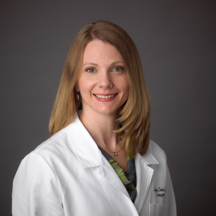You’ve Got Gall… Gallstones more common in women and may require surgical removal
By Susan Sees, MD
Each year, approximately 800,000 people. are admitted to the hospital for complications with their gallbladders – most often because of gallstones. They occur more commonly in women, and more frequently in those who have been exposed to higher amounts of estrogen during their lifetime through birth-control pills, hormone therapy, or pregnancy.
The gallbladder is a small pear-shaped organ located just below the liver. It plays an important role in food digestion by storing bile produced by the liver and providing it to the small intestine where it breaks down fat. The gallbladder generally goes unnoticed unless a patient experiences symptoms of a disorder, such as gallstones. Gallstones are like grains of sand or small rocks that develop in the gallbladder as a result of bile becoming chemically unbalanced. Only about 60 percent of people with gallstones experience symptoms, as they can develop and pass through the gallbladder and intestines without causing symptoms. However, when a gallstone is large it may become caught in the passageways, or ducts, of the gallbladder, pancreas or liver, resulting in extreme pain.
Gallstones generally fall into one of two categories, depending on the cause. Pigment gallstones develop when bile contains too much bilirubin, a naturally-occurring chemical normally removed by the liver. Pigment gallstones generally develop in individuals with liver conditions such as cirrhosis or sickle cell anemia. Another type, cholesterol gallstones, comprises 80 percent of all gallstones and consists mostly of undissolved cholesterol. Because most gallstones result from high levels of cholesterol, diet plays a very important role in the prevention of gallstone development.
Diets high in fats and cholesterol are a main contributor to gallstone development. However, cholesterol levels in your bile do not always correspond to cholesterol levels in your blood, especially since cholesterol-lowering drugs do not prevent gallstones even though they lower blood cholesterol levels. Crash diets that include too little fat, skipping meals, too few calories, rapid weight loss or going long periods without eating prohibit the gallbladder from emptying often enough or completely, increasing the risk of gallstone development.
In addition to diet, other risk factors for developing gallstones include gender, body weight, age and ethnicity. Women are more likely to develop gallstones because estrogen causes more cholesterol to be excreted in bile. Women who have high levels of estrogen in their bodies, such as those who are pregnant, taking birth control pills or on hormone therapy, are especially at risk. Overweight individuals may also have higher levels of cholesterol excreted into their bile. Individuals older than 60 years of age and those of Native American and Mexican-American descent are also high-risk groups.
If gallstones develop and cause symptoms, medical intervention is necessary in order to avoid permanent organ damage. Symptoms of gallstones often include abdominal pain, nausea, vomiting and diarrhea especially after a high-fat or spicy meal, known as a “gallbladder attack.” Seek medical treatment immediately if you experience these symptoms especially if accompanied by dark urine, fever, chills and/or yellowing of the skin and whites of the eyes, as this may indicate an obstructed bile duct, which can result in gallbladder rupture, a potentially fatal occurrence.
The most common treatment for gallstones is surgical removal of the gallbladder. This procedure is usually performed on an out-patient basis using the laparoscopic method, allowing most patients to return to normal activities within days. A person with a healthy liver can function normally without a gallbladder, however, lifestyle modifications such as limiting fat intake and increasing dietary fiber may be necessary for normal digestive function. Although surgery is the most common treatment for large gallstones and blocked ducts, non-surgical options to dissolve or break up the stones may be appropriate for individuals unable to undergo surgery due to complications such as cardiovascular conditions or liver disease.
If you experience signs or symptoms associated with gallstones or fall into a high-risk group, contact your physician to discuss treatment options and ways to minimize your risk. It is important to seek medical care at the first sign of gallbladder attack or pain to avoid additional complications such as infections, duct obstructions or gallbladder rupture.
About Susan Sees, MD
Susan Sees, MD is the most recent addition to Surgical Associates of Chester County (SACC), and is in practice with Nenito Uy, MD, FICS and Christopher Olukoga, MD, FACS. SACC works directly with your primary care doctor to provide you with outstanding care. They’ve brought together a team of excellent physicians, advanced medical technology, and updated facilities to bring you exceptional healthcare in your own backyard. To schedule an appointment with Dr. Sees or any of our surgeons, please call 610-384-6550.



